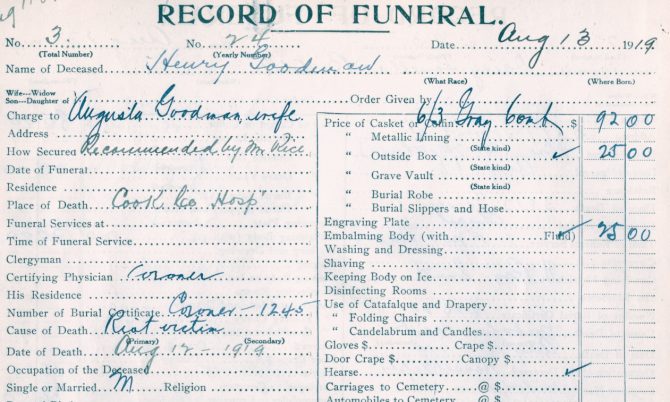The sky was a searing hot blue with temperatures in the 90s. Farmers anxiously watched for signs of healing rain for their dry crops. As school was out, teenagers hung out at the beach for relaxation. Eugene Williams and four of his friends were relaxing on a raft at the 27th Street beach when his raft crossed the invisible line separating black and white swimmers at the 29th Street beach. He was immediately pelted with rocks, which caused the raft to move and him to tumble off into the water and drown. In an instant, life in Chicago changed for everyone.
Blacks insisted the Chicago Police Department arrest the white attackers. When this did not happen, five days of intense racial violence erupted. When the riot ended, the death count was 23 blacks and 15 whites. Carl Sandburg, already a renowned writer working for the Chicago Daily News, had been writing a series of articles designed to ease tension between the races. Instead, it highlighted all the prevalent conditions that contributed to one of the bloodiest race riots in Illinois history. The great migration from the South, lack of job opportunities, veterans returning from World War I and lack of housing fueled the flames of anger on both sides.
After five bloody days of unrest, the riot was curtailed by the call of National Guardsmen and the thundering rains the farmers had been looking for. Educator Madeline Stratton Morris remembers in a HistoryMakers oral history video how her father had to be safely transported home from work in a police wagon. The fathers in her building checked on one another's safety from darkened apartments behind the window curtains at night. Most of the violence had taken place on the South Side, where gangs and mobs of whites would invade the black community and blacks would try and protect their neighborhood. The funeral register of Kersey, McGowan and Morsell listed several riot victims.
Books
Many historians and sociologists have since studied and written about the riot’s impact on race relations and politics in Chicago and the residual effect even today, including these books.
The Chicago Race Riots, July, 1919
For more titles, please see our booklist 1919 Chicago Race Riots: A Reading List.
Additional Resources
Further study and research can be found at the Vivian G. Harsh Research Collection at Woodson Regional Library by using manuscript collections, including the Illinois Writer's Project: "Negro in Illinois" Papers.
The Newberry Library, in partnership with Chicago Public Library and other organizations, is hosting a yearlong series of community conversations about the legacies of 1919.




Add a comment to: Chicago Race Riots: The Long Hot Summer of 1919